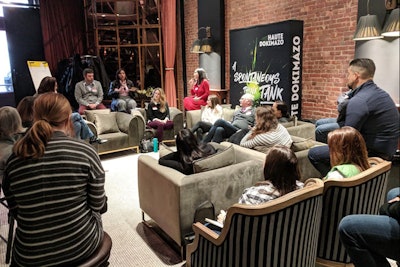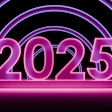
David Adler (@davidadler) is the C.E.O. and founder of BizBash.
In January, I attended the New York City edition of Haute Dokimazo. Billed as a “think tank” for event pros, Haute Dokimazo, which means “to examine” in ancient Greek, is the brainchild of Liz Lathan, Nicole Osibodu, and Tom Spano. The organization was born from their observation that many of the larger association and industry events were becoming irrelevant in the lives of attendees. So they formed Haute Dokimazo to bring together no more than 100 event pros. Recently, Austin, Texas-based marketing agency C.E.O. Jeff Haynes of Haute Rock Creative acquired the group.
Through Haute Dokimazo, Lathan, Osibodu, and Spano experimented with the un-conference methodology for effective meetings made popular by Adrian Segar, author of Conferences That Work: Creating Events That People Love. The concept is simple: Attendees create the topics and choose moderators and speakers on the fly. No formal program is developed until the attendees arrive at the location.
According to the founders, the three topics that come up in every event are R.O.I., strategy, and working with multiple generations. The two-day event took place in Tribeca at Town Stages, the offices of IDEKO, and the event space of the office furniture company Steelcase Worklife Center. In order to showcase the venue to the attendees who plan events, the first day featured a real-life wedding and reception attended by the bride and groom’s family and the attendees of the conference.
The most important sessions were on new content creation techniques for conferences that attract attendee year after year, including creating more important interactive experiences, navigating the technology budget squeeze, hiring brand ambassadors, using data to make events more relevant, hiring agencies and experiential suppliers, pitching sponsors, saying no to clients, determining appropriate discount pricing, understanding what event strategy really means, and marketing the value of events to C-suite executives.
As an advocate for great collaboration artistry, I was curious to see if this method was effective for both the attendees and as a business model for a conference. The good news is that it worked well because the organizers and attendees had the ability to make changes on the fly and even walk out of sessions.
It proved that the best experts and speakers at professional events usually are the attendees who participate. Most of the topics seemed more relatable to attendees than traditional conference programming. It also led to fewer canned presentations and more original thinking.
I was also impressed with the facilitation skills of the people who stepped up to run the sessions. The organizers gave helpful tips on how to facilitate smart conversations, including allowing interruptions, allowing more talking by participants, and recognizing quiet members of the group. The key to success still comes down to the experience of the organizers to recognize the mix of topics and edit appropriately during the early curation stages to create the final program.
I would conclude these spontaneous think thanks that use the principles of social physics to spread fruitful ideas in a community produce meaningful actionable outcomes for attendees who participate.
Attendees agree. Cindy Lo, C.E.O. of Red Velvet Events, shared her take on the conference: “This concept is so fresh that you don’t even know that you need to know what is being discussed and then the conversations can change your world.”
If you want to try an unconference, here's a quick timeline and tasks to get started:
First evening: Attendees
- Group gathers for dinner.
- Large sticky pads are given to everyone to write down ideas for sessions and topics.
- Ideas are put on a large wall for everyone to validate; attendees put checks next to the ones they like.
Late night: Staff
- The team organizes topics to find common themes.
- The groups decide on 15 to 18 topic sessions and find a facilitator who either volunteers or is “voluntold.”
- Moderators receive texts asking them to facilitate.
Program (one or two days):
- The group gathers and sessions begin. It is casual and the moderator/facilitator guides the conversation.
- Like traditional conferences, the day is divided into long sessions of four or five hours or short sessions of 45 minutes with choices of four or five different topics in each time frame.
- The last part of the event is a roundup of opinions on the day and what went right and what went wrong so that the next experience can be improved.



















